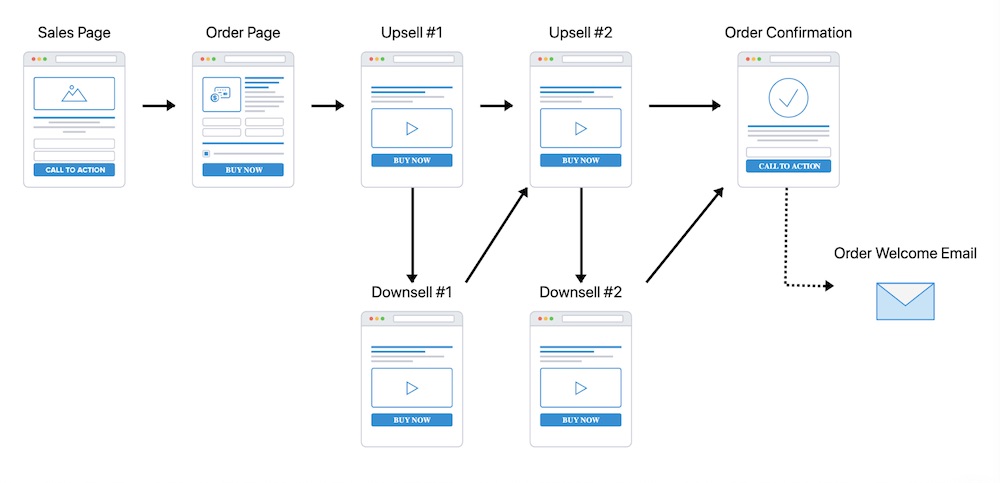
Generating leads on LinkedIn is no longer about sending endless connection requests or posting sporadic updates. To succeed, professionals need a structured approach — a funnel that guides potential prospects from initial awareness to meaningful engagement. Unlike traditional lead generation methods, LinkedIn provides a unique space where professional credibility and networking naturally overlap, making it easier to nurture relationships into opportunities.
Building a lead generation funnel on LinkedIn isn’t about shortcuts. It’s about understanding each stage of the process, from optimizing your profile to sharing content that draws interest, and finally moving those connections into conversations. With the right strategy, LinkedIn becomes more than a place to showcase experience — it becomes a system for consistently attracting and converting the right leads.
Step 1: Optimize Your Profile for Credibility
Your profile is the first step in your funnel. It shapes how prospects perceive you and determines whether they continue engaging.
Craft a Headline That Signals Value
A strong headline goes beyond job titles. It highlights expertise and positions you as someone who can solve problems. Recruiters, peers, and decision-makers are more likely to connect when they see immediate value.
Write a Story-Driven “About” Section
The “About” section is your chance to connect on a personal level. Focus on what you’ve accomplished, what drives your work, and how you add value to others. A compelling narrative attracts curiosity and builds trust.
Show Activity and Proof
Profiles with endorsements, recommendations, and active posting appear more credible. Engagement not only signals expertise but also keeps your profile visible in searches.
Step 2: Understand the Power of Impressions
Visibility is essential at the top of the funnel.
What Is an Impression on LinkedIn?
The phrase what is an impression on linkedin refers to the number of times your content appears on someone’s screen. Impressions don’t guarantee clicks or engagement, but they measure visibility. The more impressions your posts generate, the greater your chances of reaching prospects.
Why Impressions Matter in Lead Generation
High impressions increase awareness, ensuring your name and content are regularly seen. This repeated visibility builds recognition, which is critical when prospects move further down the funnel.
Step 3: Create Content That Attracts Prospects
Content drives the funnel forward by positioning you as a knowledgeable professional.
Share Educational Insights
Posts that explain industry trends, provide tips, or highlight lessons learned show your expertise. Educational content resonates with prospects looking for guidance.
Use Storytelling to Connect
Sharing real examples of challenges and solutions makes your profile relatable. Storytelling helps potential leads see the value you can bring to their own situations.
Encourage Interaction
End posts with questions or calls for opinions. Engagement increases impressions, boosts visibility, and creates natural entry points for conversations.
Step 4: Engage Strategically With Your Network
Engagement transforms impressions into relationships.
Comment on Relevant Posts
Leaving thoughtful comments demonstrates expertise and opens doors to conversations. Prospects who notice your input are more likely to respond positively to outreach.
Personalize Connection Requests
Generic requests rarely work. Adding a note that references shared interests or recent activity makes your request feel intentional.
Balance Quality and Quantity
While it’s important to expand your network, focusing on relevant professionals ensures your funnel remains strong and targeted.
Step 5: Use Tools to Streamline Outreach
Consistency is key in managing outreach effectively.
Leveraging a LinkedIn Automation
Sending connection requests, tracking follow-ups, and organizing conversations can become overwhelming. Linkedin Automation helps streamline these processes, saving time without sacrificing personalization. LiProspect, for instance, is often noted as a solution professionals use to balance automation with authenticity.
Integrating Automation Into the Funnel
Automation should support, not replace, human interaction. Use it for scheduling, reminders, and data organization while ensuring messages remain personalized and authentic.
Step 6: Nurture Leads With Value
The middle of the funnel is about building trust and keeping prospects engaged.
Share Useful Resources
Offering case studies, guides, or curated articles keeps you top of mind while adding value to the relationship.
Stay Consistent With Follow-Ups
Following up respectfully shows persistence without pressure. Adding new context or insights makes your outreach more welcome.
Keep Relationships Human
Always remember that behind every profile is a person. Building rapport ensures conversations feel genuine, not transactional.
Step 7: Convert Conversations Into Opportunities
At the bottom of the funnel, prospects should feel ready to explore collaboration.
Suggest Next Steps Gently
Instead of pushing for immediate sales, suggest small, actionable steps — a quick call, a short exchange of ideas, or a collaboration discussion.
Focus on Mutual Benefit
Conversations should emphasize value for both parties. When prospects feel the exchange benefits them, they are more likely to continue engaging.
Track and Refine Your Process
Review what works and what doesn’t. Regularly analyzing your funnel helps improve performance over time.
The Ending Note
Building a strong lead generation funnel on LinkedIn doesn’t require complex tactics — it requires clarity, consistency, and authenticity. From optimizing your profile to understanding impressions, creating content, and engaging thoughtfully, each stage of the funnel plays a role in guiding prospects closer to genuine conversations.
Tools like automation can simplify the process, but the heart of success lies in human connection. When messages are personalized, content adds value, and relationships are nurtured, cold outreach transforms into meaningful opportunities.
Over time, a well-structured funnel becomes more than a system for generating leads. It becomes a framework for building trust, strengthening your network, and positioning yourself as a credible professional in your industry. LinkedIn, when used strategically, offers the chance to not only attract leads but to convert them into lasting relationships.